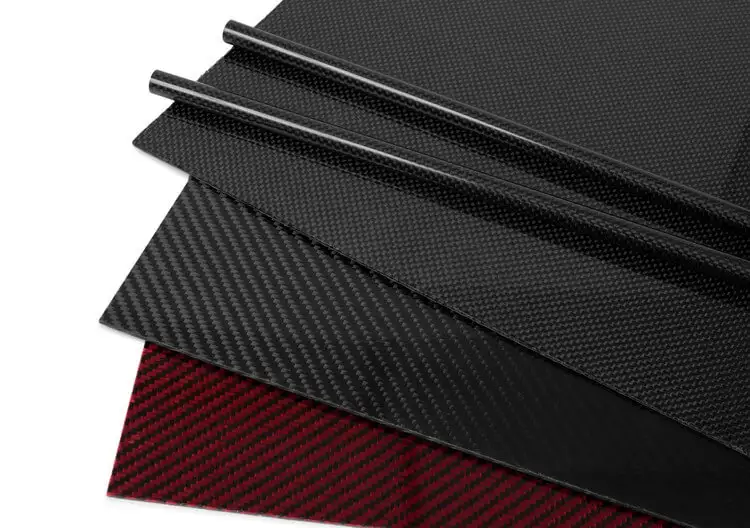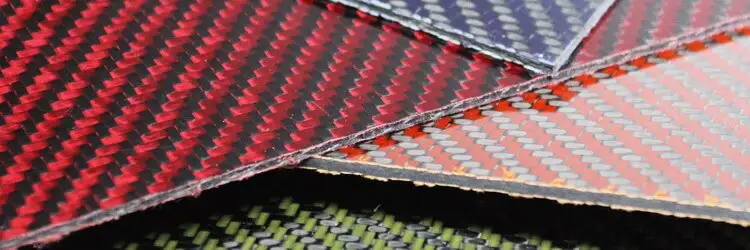How Fiber Direction Influences Tube And Plate Properties
p>Take a close look at a section of carbon fiber or fiber glass tubing or plate and you will see that the fibers go in different, specific directions. Comparing different styles of tubing you might notice that fiber direction, also known as orientation, is not always uniform. Composite tubing and plate manufacturers use different orientations depending on what they want to accomplish with the finished product.
In this post, we will explain how fiber direction influences the properties of carbon fiber and fiberglass tubing. Specific properties are often ideal for specific applications. By the end of this post you’ll know how fiber orientation affects the tube and how to pick the right fiber orientation for your project.
TOP THREE FIBER ORIENTATIONS
Fibers can be oriented in any direction between 0° and 180°, although fiber orientation beyond 90° is usually referred to as a negative angle value. For example, a 135° fiber angle is equal to a -45° angle. Most carbon fiber and fiberglass tubing on the market today utilizes a combination of two or more of these orientations:
- 0° – Zero-degree fiber angle is the most frequently used orientation. When fibers are oriented in the direction of the load they are the strongest and stiffest. On tubing, the zero-degree direction is along the length of the tube and contributes to bending stiffness strength.
- 90° – Ninety-degree fiber angle is used when bending both directions is required. In a tube the ninety-degree fibers are oriented in the circumference of the tube. They help keep the tube from crushing or buckling when loaded.
- ±45° – Forty-five-degree angles are often used in conjunction with zero and ninety-degree plies to create a quasi-isotropic layup. A positive forty-five-degree layer is almost always paired adjacent to a negative forty-five-degree layer. When used on a tube, forty-five-degree layers contribute to twisting stiffness and strength.
Woven fiber is often referred to as having a 0/90 degree fiber angle since there are fibers in both directions, but in a single piece. Some woven materials can contain even more fiber directions; for example, triaxial weaves have fiber in three directions and are usually quasi-isotropic by themselves.

THE FIBER ORIENTATION’S EFFECT ON PROPERTIES
The way fibers are oriented in a carbon fiber or fiberglass layup influences its properties for making everything from tubes to space-ships. Builders must consider those properties during their design process. Below we will explain how each of the common fiber orientations affect the properties.
1. 0° ORIENTATION
If a part will only be loaded in one direction it’s ideal to have all the fibers oriented in that direction. Pultruded rod and tubing are examples of a part that contains only 0° fibers. Since most parts aren’t loaded in only one direction we need to add other angles to maximize strength. A tube that sees only bending and no twisting would still likely benefit from some additional fiber angles. Adding 90° layers helps the tube maintain its shape better so that it doesn’t buckle prematurely.
2. 90° ORIENTATION
As previously mentioned, 90° layers are often added to tubes to make them more resistant to buckling and crushing. High concentrations of 90° or “hoop” layers can also be found in pressure vessels. Since the force is trying to enlarge the tube in a pressure vessel, 90° layers resist the force best. When 90° layers are used in conjunction with 0° layers in a plate, its referred to as bidirectional. Using woven cloth can be an easy way to quickly build parts with fiber in both 0° and 90° directions.
3. ±45° ORIENTATION

Carbon Fiber Olates
45° layers serve different purposes depending on the application. You’ll almost always see a +45° paired adjacent to a -45° layer. This is to keep the laminate “balanced” and from forcefully twisting when loaded. When 45° layers are used in a plate that already contains an equal mix of 0° and 90° layers the plate becomes quasi-isotropic. Whereas a bidirectional plate has equal properties in two directions, a quasi-isotropic plate has quasi-equal properties in any direction. In a tube, 45° layers perform the job of adding torsional strength and stiffness. That’s because when a tube is twisted, the force acting on the laminate is actually at forty-five-degrees. Some laminates will use angles other than 45° as a compromise between bending, crushing and torsion performance. Since 0° layers aren’t possible on filament wound tubes it’s common to see 10° or 15° layers use instead.
CHOOSING THE RIGHT FIBER ORIENTATION
Now that you know how each fiber orientation affects the properties, you can choose the right layup. If you need a tube that performs in a wide variety of conditions, a bidirectional layup is ideal. If you need a tube that performs well in twisting, pick a product with more 45° layers. If you need to increase thickness quickly, a woven material might be a good choice.
Rock West Composites offers plates and tubes with layups to meet almost any demand. If you need a custom or engineered layup for your project give us a call or shoot us an email. If you have more questions about how fiber orientation affects the performance of a part, our customer service representatives would be happy to help.

